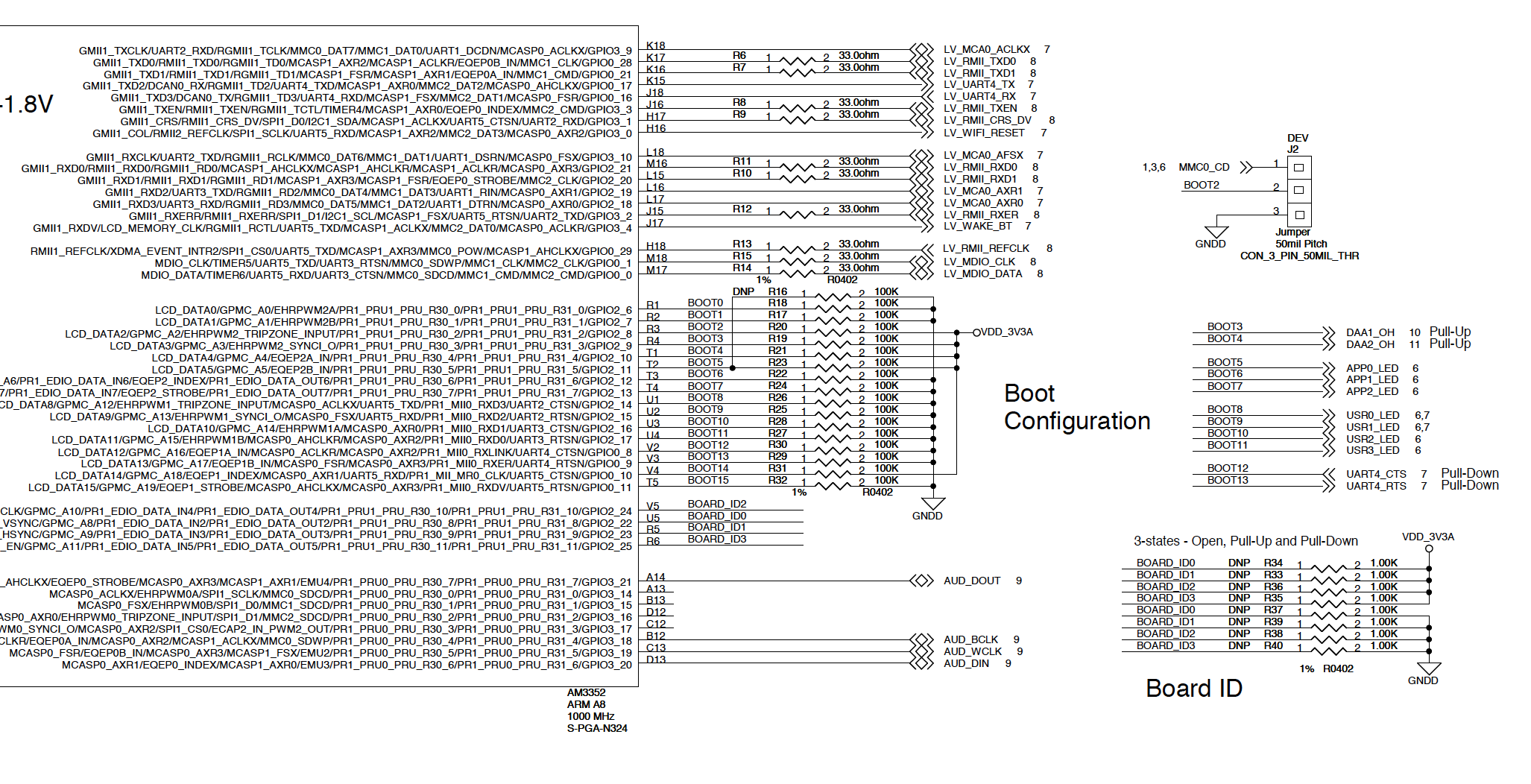Hi
We have developed a custom board that is very similar to the Beaglebone Black. There is onboard eMMC of 4GB and RAM of 256MB. There is an SD Card slot for microSD cards.
The SYSBOOT[2] pin has a two position jumper on it and the rest of the pins of SYSBOOT [4:0] are either pulled high or low.
So that we get either SYSBOOT[4:0] = 11000b or 11100b depending upon whether the jumper is in position or left open.
SYSBOOT[2] gets pulled low either if there is a SD Card inserted of forced low. If the jumper is left open than it gets pulled high.
Our problem is that the board will boot up only if
(A) We connect a FTDI cable to a USB port (PC or Mac that has been turned on). AND
(B) We have not erased eMMC AND
(C) We have a valid SD Card (i.e has a FAT32 partition and a Linux partition).
If we disconnect the FTDI cable than it does not boot up.
Any ideas why this happens and how could we rectify this?
Best
Rao


